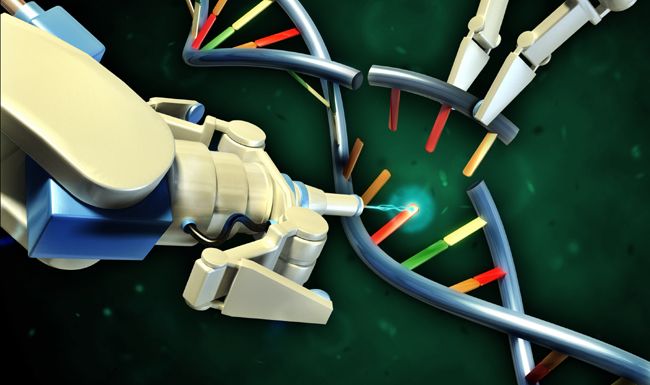Page 11049
Jul 16, 2016
POKÉMON GO Is More Popular Than Porn Right Now
Posted by Shailesh Prasad in categories: entertainment, internet
If you’ve been online at any point in the past week, you’ve probably come to realize that Pokémon Go is in the midst of a full-fledged internet takeover. It’s the top app in the iOS App Store, and just yesterday, it was revealed that people are using Pokémon Go more than they are social media apps like WhatsApp, Instagram, Facebook, and Snapchat.
But it turns out it was more loved than any of us realized, as by certain metrics, Pokémon Go is more popular than one of the main pillars of the internet: porn.
This weekend, video game industry analyst ZhugeEX discovered that according to Google Trends, people are searching for Pokémon Go more than they are for pornography. Take a look at the data for yourself here, or check out the screenshot below:
Jul 15, 2016
Why Are Cancer Clusters So Hard To Prove?
Posted by Karen Hurst in categories: biotech/medical, government
True and sad. I personally have seen so many of these situations across many government facilities.
Communities across the United States are living in cancer clusters, but federal aid is hard to come by when the cause of the cancer cannot be easily proven.
Jul 15, 2016
New images of a calcium-shuttling molecule that has been linked to aggressive cancer
Posted by Karen Hurst in categories: biotech/medical, physics

Scientists have captured new images of a calcium-shuttling molecule that has been linked to aggressive cancers. The three-dimensional structure could help researchers develop novel therapies and diagnostic tools for diseases that are caused by a malfunction in calcium adsorption.
Alexander Sobolevsky’s lab at Columbia University Medical Center is studying a family of proteins called “Transient receptor potential (TRP)” channels. These proteins line surfaces inside the body, such as the intestine, and form pores that help calcium cross a dense barrier of lipid and protein called the membrane to reach the interior of the cell.
Jul 15, 2016
3D-Printed Gatling Gun Fires 48 Rubber Bands in Mere Seconds
Posted by Karen Hurst in categories: 3D printing, biotech/medical, cyborgs
Matthew Davis’ Arcus is officially the most impressive thing we’ve ever seen come out of a 3D printer. Sure, cheap prosthetics and replacement body parts are important uses of the technology, but this spinning rubber band blaster is what finally makes us want to put a 3D printer on our desks.
https://www.youtube.com/watch?v=r8PtwqRvVDU
Unlike most rubber band blasters that only fire a single shot every time you squeeze the trigger or require a drive mechanism to make them fully automatic, Davis’ Arcus uses the energy from the loaded elastics to spin the barrel and automatically fire shot after shot until it’s empty. Brilliant.
Continue reading “3D-Printed Gatling Gun Fires 48 Rubber Bands in Mere Seconds” »
Jul 15, 2016
The Rolls-Royce Phantom Now Has More Than 10,000 3D Printed Parts, BMW Looks to Expand Use Across Entire Line of Cars
Posted by Karen Hurst in categories: 3D printing, transportation
With more than 25 years of using 3D printing technology, there probably isn’t a global automotive manufacturer that has pushed the limits of using additive manufacturing applications than the BMW Group. For most of the quarter-century that they have been using 3D printing, it was primarily used in the production of prototypes or one-off custom parts. However BMW began using 3D printing technology to produce end-use parts in series production back in 2012 with their new Rolls-Royce Phantom. Over the next several years, more than 10,000 3D printed components would end up being used to manufacture each Phantom coupe that came off the assembly line. The switch from traditionally manufactured parts to 3D printed parts was so successful that BMW began incorporating them into the new Rolls-Royce Dawn this year.
Every wanted to reverse silent genes without mutations created? We now have a way.
Researchers have developed a technique that turns back on silenced, or switched-off, genes without causing unwanted mutations.
Jul 15, 2016
Should a human-pig chimera be treated as a person?
Posted by Karen Hurst in categories: bioengineering, biotech/medical, genetics
There is a well-documented organ shortage throughout the world. For example, 3,000 kidney transplants were made last year in the United Kingdom, but that still left 5,000 people on the waiting list at the end of the period. A lucrative trade in organs has grown up, and transplant tourism has become relatively common. While politicians wring their hands about sensible solutions to the shortage, including the nudge of opt-out donation, scientists using genetic manipulations have been making significant progress in growing transplantable organs inside pigs.
Scientists in the United States are creating so-called ‘human-pig chimeras’ which will be capable of growing the much-needed organs. These chimeras are animals that combine human and pig characteristics. They are like mules that will provide organs that can be transplanted into humans. A mule is the offspring of a male donkey (jack) and a female horse (mare). Horses and donkeys are different species with different numbers of chromosomes, but they can breed together.
In this case, the scientists take a skin cell from a human and from this make stem cells capable of producing any cell or tissue in the body, known as ‘induced pluripotent stem cells’. They then inject these into a pig embryo to make a human-pig chimera. In order to create the desired organ, they use gene editing, or CRISPR, to knock out the embryo’s pig’s genes that produce, for example, the pancreas. The human stem cells for the pancreas then make an almost entirely human pancreas in the resulting human-pig chimera, with just the blood vessels remaining porcine. Using this controversial technology, a human skin cell, pre-treated and injected into a genetically edited pig embryo, could grow a new liver, heart, pancreas or lung as required.
Continue reading “Should a human-pig chimera be treated as a person?” »
Jul 15, 2016
Five Things to Know About the New GMO Labeling Bill
Posted by Karen Hurst in category: government
Congress just passed a bill requiring GMO labeling, but it’s not as straightforward as you might think.
















